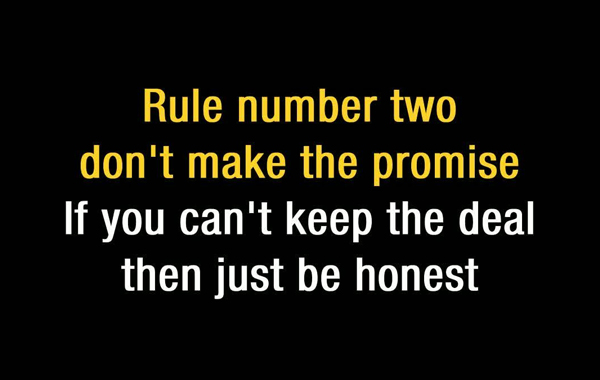What if there was a way to win more clients, earn a higher salary, and reduce your turnaround times, all without soliciting the services of a genie in a bottle?
You probably just screamed, “show me how!” at your screen.
First, calm down.
Second, read on because this article shows you how to do that. And it’s entirely free.
Here are the 4 tips that we’ll be looking at in this article:
- Evaluate your client’s goals
- Present a captivating proposal
- Use systems and processes to manage your time
- Deliver a return on investment (ROI)
Let’s get down to it, shall we?
1. Evaluate Your Client’s Goals
You’ve heard it said time and again that failing to plan is planning to fail. Will a good captain set off for a journey on the high seas without first determining the destination?
To be successful as a writer, you need to begin with your client’s goals in mind. Here are some of the questions you need to answer together with your client:
- What does your client aim to achieve with the content you’re working on?
- Who are the target audiences?
- What is the search intent of the audience when they’re looking for the content?
- What is the client’s marketing strategy, and how will my services contribute to this strategy?
If it’s a long term project, you need to assess the short-term and long-term goals that the project aims to achieve.
One of the short-term goals, for instance, might be to create awareness of the client’s new product in the market. Once you have this determined, you will be able to craft copy that is appropriate for this target.
For example, the terms that you’ll use in your text will be more geared towards awareness creation.
By doing a proper evaluation of your client’s goals, you will acquire a sense of direction when you start working. You will also be well-positioned to develop more worthy ideas and deliver quality work to both your client and the audience.
2. Present a Captivating Proposal
After you’ve evaluated your client’s targets, you will be able to deliver an appropriate proposal to them.
When drafting your proposal, it’s crucial that you do this with the client in mind. Don’t just list your expectations and your payment terms before explaining what the client will gain from your services. It’s about the client, not your overdue rent. At least, not at the time of drafting the proposal.
You need to demonstrate your dedication to providing professional services to the client. One way you can achieve this is by providing proof of your work.
Demonstrating your skills and the kinds of services you offer gives the client a clear picture of what it’s like to do business with you. It will help you kill the following two birds with one stone:
- Justify your rates and
- Prove that you’re not just another sleazy marketer.
When you communicate the benefits of your services to the client, you are providing a solution to their problem. If you nail this, you will spark excitement in the client about collaborating with you.
Please keep it clean and honest. Only promise what you are sure you will be able to deliver.

3. Use Systems and Processes to Manage Your Time
When you’re a freelance writer, it’s very easy to let the line between work time and personal time become blurred.
You need to treat your services as a business and dedicate time to your work. Stick to this schedule just as you would if you were formally employed in an office setup.
If you do this, you will reduce your chances of becoming overwhelmed with work and personal responsibilities.
On the point of time management, it is worth mentioning that there’s a difference between being busy and being productive. Your goal should be productivity.
Analyze your days and ensure that you’re not in the business of busyness.
Here are 3 ways you can start making sure that you use your time more productively:
Determine your productivity zones
These are the blocks of time in your typical day when you can be most productive. For some, it might be from 9 am to 5 pm. For others, it might be from 9 pm to 5 am. Get this straight to reduce ambiguity in your workdays, and to be able to schedule tasks properly.
Prioritize. Remember the Pareto principle (80/20 rule)
80% of the things we spend our time on in a day only help us achieve 20% of our goals. The remaining 20% is what matters, and it yields 80% of the results.
Identify this crucial 20% and give it the top priority during your productivity zones.
Use the Pomodoro Technique
Now that you’ve determined your priorities, map out the time that you want to spend on each.
The Pomodoro Technique was developed by Francesco Cirillo. It’s a time-management strategy that helps you work smarter, not harder.
This is how it works:
Step 1: Set a timer for 25 minutes.
Step 2: Work on your task. During this time, you will work on the specific task that you mapped out earlier. This 25-minute block of time is distraction-free; focus solely on achieving the task at hand.
Step 3: Take a break. After 25 minutes are up, the timer will go off. Take a five-minute break before returning for another 25-minute run.
Step 4: Repeat the steps above four times. After the fourth Pomodoro, take a more extended 20-minute break.
This technique is deceptively simple, but it is essentially what effective time management entails.
Apart from time management, there are other vital steps you should take to ensure success in the freelance world. These will, however, require a series of in-depth articles.
To give you a headstart, check out this brilliant course on working online. It’s been crafted by the Small Revolution team so you can be sure that you’re getting sage-level wisdom.
4. Deliver a Return on Investment (ROI)
You want to ensure that your service is not just to provide a cluster of words on a page. Give your clients the results that they need.
If you’re a copywriter for an e-commerce business, for instance, your copy should rake in more conversions and generate sales growth.
If your writing generates more money for the client than it costs them to hire you, you’ve got a win-win situation. The client achieves their business goals and they are happy to pay you for your services. And if they’re happy to pay you for your services, then you needn’t worry about the overdue rent that we talked about earlier.
Everyone goes home happy.
Final Thoughts
Being a successful freelance writer means that you, your client, and your target audience benefits from your business relationship. Do the best on your part to deliver maximum value to all parties involved.
Take the initiative to sharpen your skills every day by reading widely, liaising with other professionals in the industry, and enrolling in courses tailored to writers’ needs.
Go ahead. Take action and start winning as a writer!
Photo by Pressfoto


